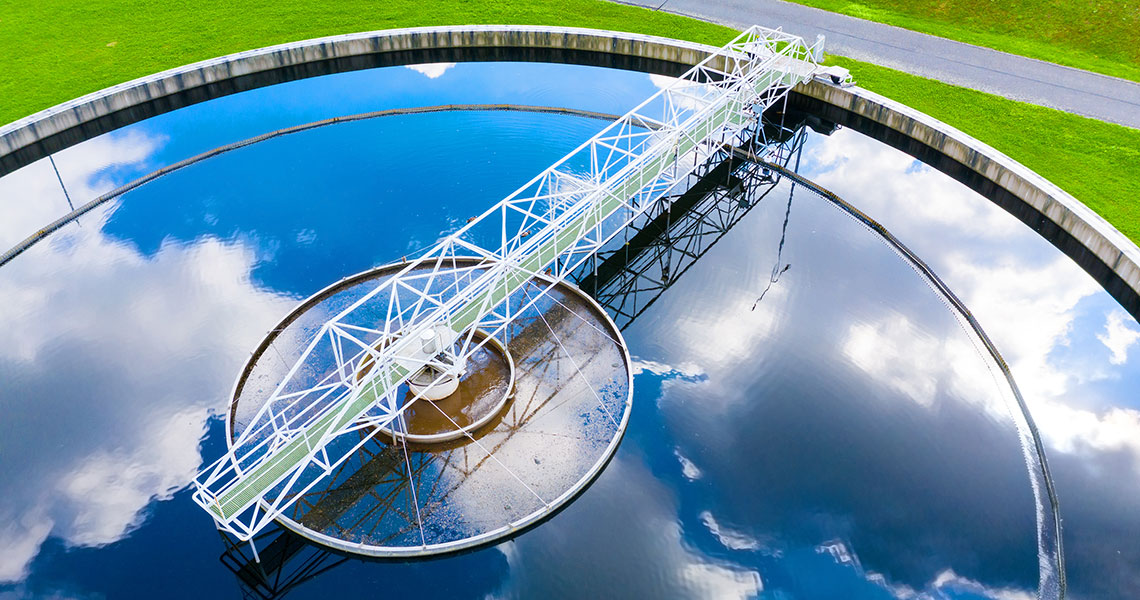The Benefits of Anaerobic Wastewater Treatment

Conventional wastewater treatment consists of three distinct phases: primary, secondary, and tertiary. The primary treatment involves the mechanical removal of solids by sedimentation or flotation and is followed by a secondary treatment which removes organic matter through microbial decomposition. A further final, or tertiary, treatment may also be required depending on the final destination of the wastewater – such as re-entering the mains water supply.
The choice of secondary treatment depends on a number of factors including the wastewater’s chemical and biological oxygen demand (COD & BOD), operational and maintenance costs, sludge production, desired effluent quality, and microbial concentration. The choice is generally between aerobic or anaerobic treatment, although a combination of both methods can also be used.
In recent years we have seen a steady increase in the use of anaerobic digestion treatment techniques for the treatment of wastewater (and other effluent streams), but before we can examine what is driving this, it is important to understand the differences between aerobic and anaerobic treatment, as well as the pros and cons of each.
Aerobic treatment is typically applied to efficiently treat low strength wastewater (with relatively low BOD/COD values) when the treatment requires the presence of oxygen. In contrast, anaerobic treatment is typically applied to treat wastewater with higher organic loading.
In aerobic treatment, oxygen (air) is used to circulate the material, providing the right conditions for aerobic bacteria to reproduce. These bacteria assimilate and then break down organic matter and other pollutants like nitrogen and phosphorus into carbon dioxide, water, and biomass (sludge). As the name suggests, anaerobic digestion utilises bacteria which do not need oxygen. They break down organic material in the wastewater into methane, carbon dioxide, and biomass (digestate).
While there are pros and cons to both approaches, anaerobic digestion (AD) has a number of advantages, including:
-
- AD is better at dealing with slurries with higher solids content
- AD produces biomethane gas which can be captured and used as a renewable energy source (including providing the energy to run the AD plant itself)
- AD produces less sludge (digestate) for a given volume of wastewater
- The stable digestate produced by AD is easily converted into a valuable biofertiliser
- AD plants generally have a smaller footprint than aerobic treatment
While the final choice of aerobic or anaerobic wastewater treatment will depend on the unique situation of each treatment facility, the advantages outlined above, together with greater utilisation and uptake of AD technologies including enclosed digesters and upflow anaerobic sludge blanket (UASB) systems, means that the use of anaerobic digestion is rapidly increasing in the wastewater sector.
IMPROVING THE EFFICIENCY OF ANAEROBIC DIGESTION
When designing or upgrading an AD plant there are numerous ways to maximise operational efficiency – improving both economic returns and environmental performance.
External digester heating (for example using HRS DTI Series heat exchangers) offers a number of advantages over heating systems which are located in the digester.
Using HRS G Series heat exchangers on the exhaust recovers energy which can be used elsewhere in the plant, including feedstock and digester heating, pasteurisation and digestate concentration.
The HRS BDS Series is an efficient solution to cool and dehumidify biogas for combustion, while optional heat recovery can reduce energy costs up to 20%.
The HRS DPS (Digestate Pasteurisation System) is designed to effectively and efficiently pasteurise digestate, feedstocks, sludge and similar materials, allowing operators to maximise the efficiency of their overall process while meeting regulatory requirements and increasing potential markets for digestate as a biofertiliser.
The HRS DCS (Digestate Concentration System) uses an evaporation process to concentrate the digestate, meaning that the volume is decreased, reducing the costs of storage, transport and application. Using a multi-stage evaporation process, the liquid digestate volume can be reduced by up to 80%.
To learn more about the benefits of anaerobic treatment for wastewater streams and sludges, as well as how the efficiency of the AD process can be improved, contact HRS Heat Exchangers today.